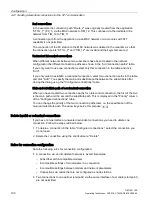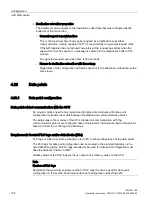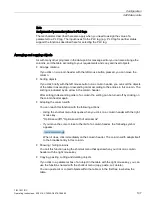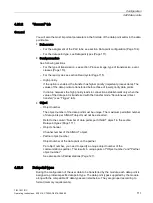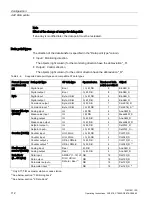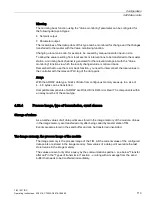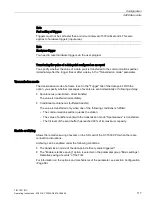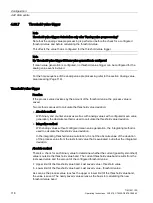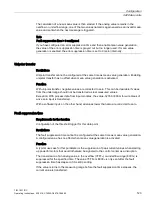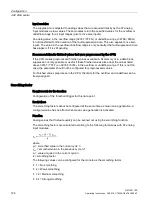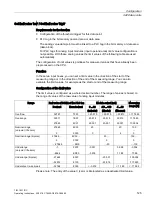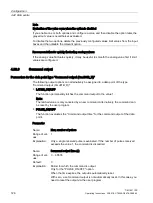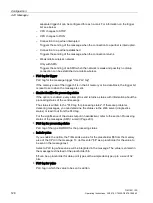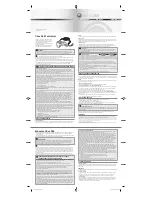
Configuration
4.22 Data points
TIM 1531 IRC
Operating Instructions, 02/2018, C79000-G8976-C468-02
113
Mirroring
The mirroring back function using the "Value monitoring" parameter can be configured for
the following data point types:
●
Setpoint output
●
Parameter output
The local values of the data points of this type can be monitored for change and the changes
transferred to the master with the Value monitoring function.
Changing a local value can, for example, be caused by manual operator input on site.
To allow the value resulting from local events or interventions to be transferred to the master
station, a mirroring back channel is generated for the relevant data point with the "Value
monitoring" function via which the locally changed value is mirrored back.
Remember that to use the mirror back function, you need to interconnect the local values in
the controller with the relevant PLC tag of the data point.
Arrays
With the ARRAY data type, blocks of data from contiguous memory areas up to a size of
4 .. 48 bytes can be transferred.
Compatible components of ARRAY are DInt, UDInt, DWord or Real. The components within
an array must be of the same type.
4.22.4
Process image, type of transmission, event classes
Storage of values
As a rulethe values of all data points are stored in the image memory of the module. Values
in the image memory are transferred only after being called by master station TIM.
Events are also stored in the send buffer and can be transferred unsolicited.
The image memory, the process image of the module
The image memory is the process image of the TIM. All the current values of the configured
data points are stored in the image memory. New values of a data point overwrite the last
stored value in the image memory.
The values are sent only after a query by the communications partner - see below "Transfer
after call" in the "Types of transmission" section - or along with a message from the send
buffer that needs to be transferred immediately.




